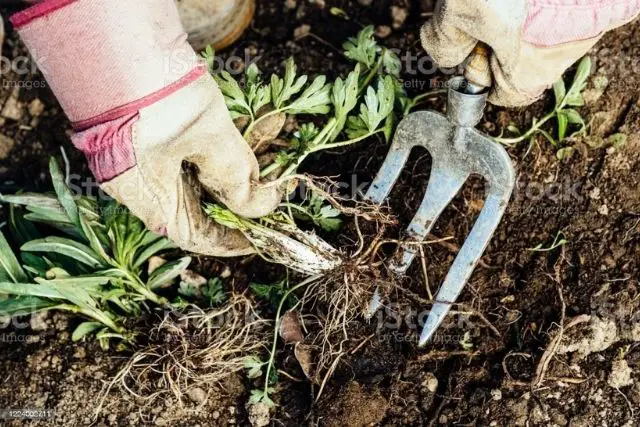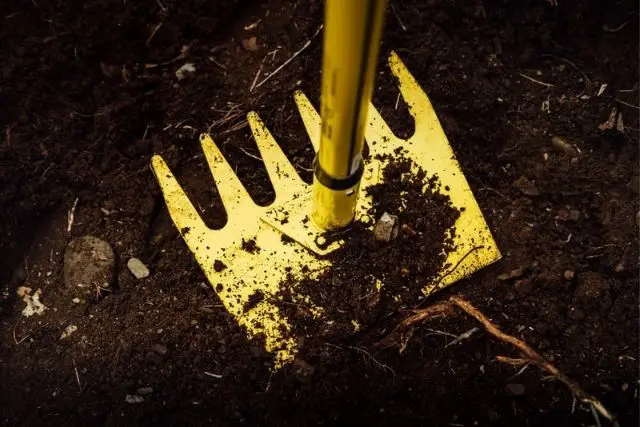Have you been thinking of giving your lawn a new look? If yes, then nothing can be a better option than to restart the lawn from scratch. Keep on reading this article until the end, because today I will spill the beans on how to replant an existing lawn.
Last week I was looking out at my lawn and thought, why not give it a new look. And while I’m about it, why not remove the old lawn and reseed it. So, I quickly gathered my thoughts and went on to replant an existing lawn. Now I’m going to share everything I discovered about how to plant a new lawn over an old lawn.
Planting a new lawn over an old one requires you to analyze the soil, clear out the existing weed, clean out the debris, settle the soil, add fertilizer, seed, and mulch and then water it regularly.
Table of Contents
How To Restart Lawn From Scratch? 7-Step Guide
Honestly, I love this method because it worked wonders for me. Now, this is a bit of a time-consuming process, but I guarantee you the results will be 100% perfect. This method is the best for those lawns full of weeds, just like mine. So, let’s dive into the simple process.
Step 1: Analyzing The Soil

Obviously, the initial step to restarting a lawn from scratch is to analyze your soil. Suppose you have been an avid gardener like me. In that case, you will know how important it is to examine the ground and treat it accordingly. You can purchase a soil testing kit from your nearest home depot store. By doing so, I knew which of the seeds could grow better on my lawn.
Step 2: Clear Out Existing Weed

The next thing is to get rid of the existing weed on your lawn. I won’t recommend using any chemicals as they might harm the new seedlings you plant. To get rid of the current weed and other small plants, you can do so manually. Here are some of the Best Weed Removal Tools.
Here I used a sod cutter to get rid of all the gunk. If you don’t have a sod cutter, you can also use a black poly film. Cover the lawn area with a black poly film and secure it on the corners using a stone. Wait for a week or two, and your lawn will be all free of wild weeds and other small plants.
Step 3: Clean Out The Debris

Once all the plants are dead, you need to get rid of them from your lawn to have a new beginning. Using a rake, clean up all the dead weeds and plants. Try to use the rake properly to remove all the organic debris from their roots and not just the surface. Ensure to get rid of everything as leaving behind anything would not aid in a greener lawn.
Step 4: Settle The Soil

As soon as you are done with steps 2 and 3, the next vital step to restart the lawn from scratch is to till the soil using a machine or a rack. If you don’t have a good tiller, you can choose one from here.
Doing so will make it easier for the fertilizer and soil to mix up in the existing environment. In the end, your seeds will have better soil to germinate and become greener than ever.
Step 5: Add Fertilizer
This is the time you need to add fertilizer to the top of your existing soil to promote the better growth of your greens. Don’t forget to rake in debris or other dead weed or roots while adding the fertilizer. Be careful in this step; if you are not, your soil will tend to produce patchy results.
Step 6: Add Seed And Mulch
So, you have already known which seeds might be able to grow better on your lawn, so now you need to add them to the grounds. A seed best suited to your lawn will give you a vibrant lawn that can stay lively.
You can plant the seeds manually or have help from the seeder to ensure the whole area is appropriately covered. Using a sod roller, compact the soil with seeds to avoid them getting munched by birds. If there are any patches left, make sure to cover them with mulch or seedlings.
Step 7: Water Regularly

Water the seeds regularly as it is essential for them to germinate. Do not overwater your lawn. To avoid overwatering, you can install sprinkler heads in your garden. The best time to water your garden is in the morning. This would give your garden an excellent time to absorb moisture.
How To Remove Old Lawn And Reseed? 3-Step Guide
Suppose you are not in favor of replanting an existing lawn. In that case, you can also try another method to remove the old lawn and reseed it. This method was the easiest one and is the best for those lawns with many bald spots and wild weeds. Let’s start with step 1.
Step 1: Get Rid Of The Existing Lawn
Remove all the existing lawns you have. To have better grass, you need to eliminate all of the previous lawns you have. There are chances that this existing lawn might have debris or weed that is harmful to your lawn. Removing them will aid in growing the grass and promote a better lawn. You can have help from a sod cutter.
Step 2: Prep The Soil
You need to check the existing soil first before planting new soil. Now, fill in all the low spots with soil. Make sure to get rid of weeds or any sort of rocks. Till the lawn with a tiller machine and create a better environment full of nutrients for your garden. Smooth the lawn using a rake and firm out the soil.
Step 3: Reseed The Lawn
Next, as the soil is good to go, you have to replant an existing lawn. The best time, in my opinion, is late summer or early spring. Make sure to choose the grass that can suit your landscape. When you remove an old lawn and reseed it, it is better to use a lawn spreader. Gently press the seeds into the soil and water them. Do not overwater them as it would wash these seeds away.
Tips To Replant An Existing Lawn
When you purchase a new house, you are presented with an endless list of things to do. One of the most important is to plant and maintain a lawn. Most people have no idea how to properly care for a lawn, so they end up throwing money at the problem. Here are some tips that helped me to replant an existing lawn.
- Before beginning any lawn restoration project, properly prepare the ground. Remove any debris or roots or fix cracks, if any, in the soil.
- Dig out all of the weeds, especially those that grow deep.
- Do not overwater your lawn, especially when you plant seeds.
- Make sure to analyze the soil first.
Conclusion
There is no “right” or “wrong” way to plant a new lawn; it depends on your situation. Remove old lawn and reseed, it will give your garden a new look and better conditions to grow. Most importantly, make sure that the grass you will be planting is appropriate for your area’s climate.
- What Are The 7 Best Plants For Offices? - June 18, 2023
- 7 Best Herbs to Grow at Home - June 12, 2023
- 4 Steps on How to Efficiently Install a Hose Reel (Expert Guide) - June 8, 2023
